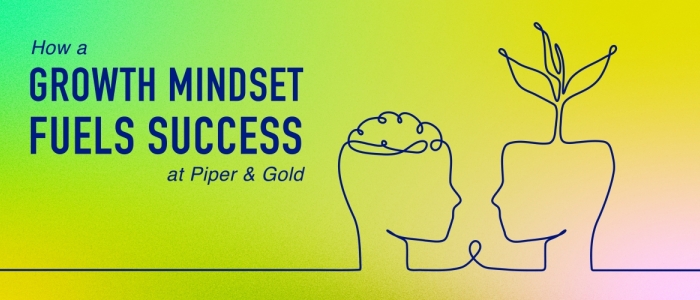
Oct. 1, 2021, was a special day for P&G for two reasons: my birthday (most importantly, of course) and International Coffee Day.
International Coffee Day celebrates coffee, promotes sustainable coffee practices, and raises awareness for coffee growers and the issues they face around the world. P&Gers celebrated the day by enjoying their drink of choice and considering the journey coffee beans take from farms to our mugs.
Creative Strategist Lisa Assenmacher usually focuses on the quantity over the quality of her coffee. When she isn’t going for volume, she enjoys roasts from sustainability focused, local brands, brewed in a french press.
Although Executive Assistant Shannon Janczewski doesn’t drink coffee or caffeine, she celebrated the day with a cup of hot chocolate.
Creative Strategist Hilary Edwards (and the rest of P&G, let’s be honest) is partial to coffee and treats from Blue Owl Coffee. Blue Owl’s REO Town location is steps from P&G’s office and offered a change of scenery pre-COVID.
Senior Strategist Cassie Cotton enjoys the process of brewing a perfect cup. She often uses many different methods of brewing from pour over, to french press, to aeropress, to espresso (pictured here)!
And the result of the espresso shot! It all starts with the beans for Cassie. She prefers supporting local roasters and often grabs a bag of beans when she travels to new locations and checks out new shops. Pictured here are beans from Cafe Saint Pio of Czech Village in Cedar Rapids, IA.
My preferred coffee-making method is a moka pot. I add the pseudo-espresso to frothed oat milk, either hot or iced.
Coffee 101
Coffee can be confusing. With so many processes, components and style preferences, it’s hard to know where to start. We’ve compiled a list of basics to keep in mind while exploring the world of coffee.
Whether you’re a coffee novice or a seasoned pro, here’s what you should know to make the perfect cup of joe:
Chemistry
Coffee is made of four key chemical components: alkaloids (caffeine and trigonelline), volatile compounds, acids and lipids. Each influences the characteristics of coffee, such as flavor, aroma and texture.
- Alkaloids produce aromatic compounds, and caffeine is responsible for the stimulating effect coffee is known for.
- Volatile compounds evaporate at room temperature and also contribute to coffee’s aroma.
- Acids produce broken-down compounds through the Maillard reaction that give coffee its bitter flavor.
- Lipids — or coffee oil — create the crema characteristic of espresso.
Production process
Producing coffee is a labor-intensive process. Each leg of the journey can affect coffee’s taste and composition. Major steps of the process include:
- Growing
- Harvesting
- Processing
- Roasting
- Grinding
- Brewing
Consumers have the most control over roasting, grinding and brewing. These steps are a great place for beginners to start experimenting.
Roasting
When roasting coffee beans, a number of chemical reactions occur, such as the Maillard reaction. This reaction happens between amino acids and reducing sugars. Variables such as temperature and roast time play a huge role in the taste of your coffee.
Lighter roasts have a “brighter” flavor with more complexity and higher caffeine content. Darker roasts are “deeper” with a nuttier flavor.
Grinding
Grind size relates to how long the coffee will be exposed to water. For example, cold brew uses a very coarse grind while espresso uses fine grind. Tailoring grind size to your preferred method of brewing can help avoid over- or under-extraction, which changes the flavor of your coffee.
Brewing
The optimal brewing temperature for coffee is between 195 and 205 degrees fahrenheit.
There are an extravagant number of brewing methods, and it’s largely up to you which you prefer. Drip coffee, espresso, French press, pour over, cold brew and percolator are popular methods, to name a few.
Other factors
To complicate matters further, water hardness and coffee freshness also impact the taste of coffee.
Soft water has low levels of calcium ions and bicarbonate, so it can make coffee highly acidic, sometimes described as sour. Hard water has high levels of bicarbonate, so it can actually neutralize the acidity of coffee.
Earlier, I mentioned volatile compounds in coffee that contribute to flavor and aroma. Over time, these compounds escape and coffee has less flavor. You can combat flavor loss by storing coffee in an airtight container in the fridge.
With innumerable combinations of origin, roasting, grinding and brewing, it’s no surprise coffee continues to capture our hearts today. Although International Coffee Day 2021 has passed, you can still celebrate by learning more, enjoying a cup and appreciating the labor, skill and expertise that goes into each and every cup of coffee.
Julia Curtis



